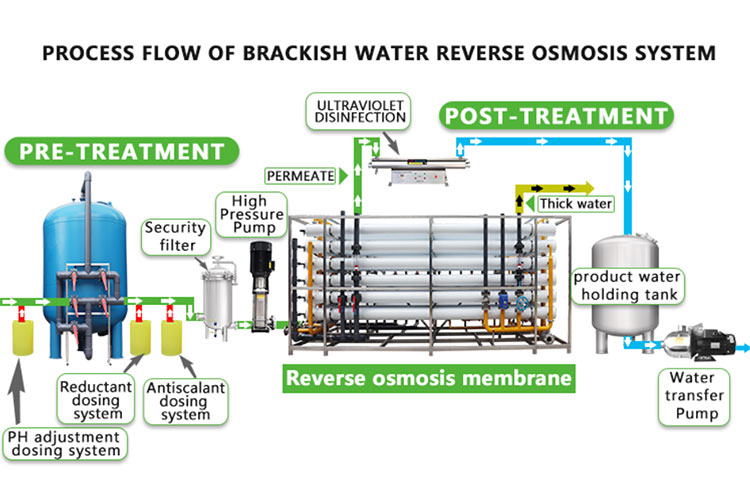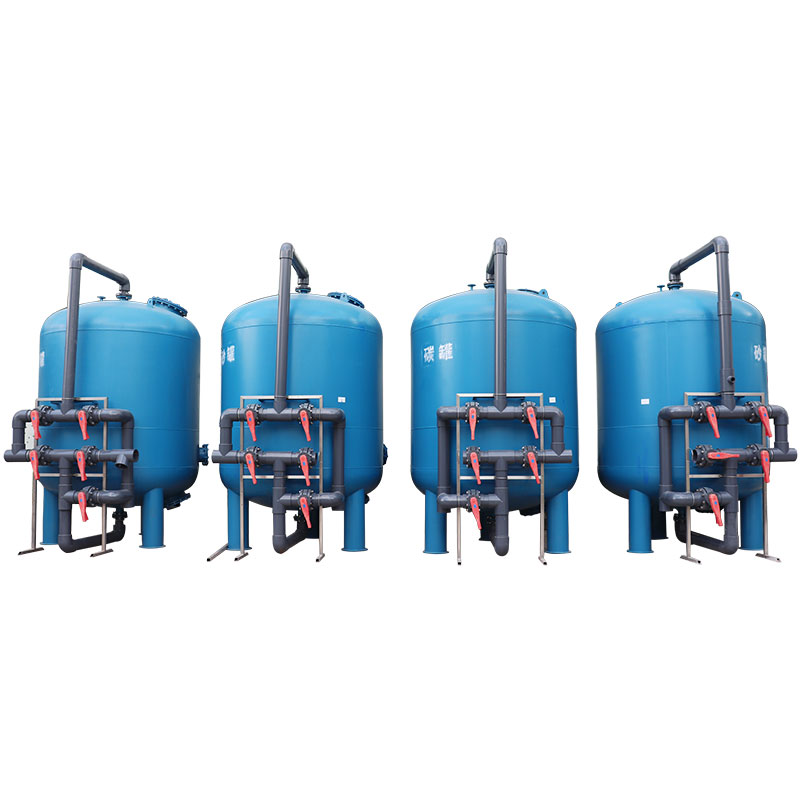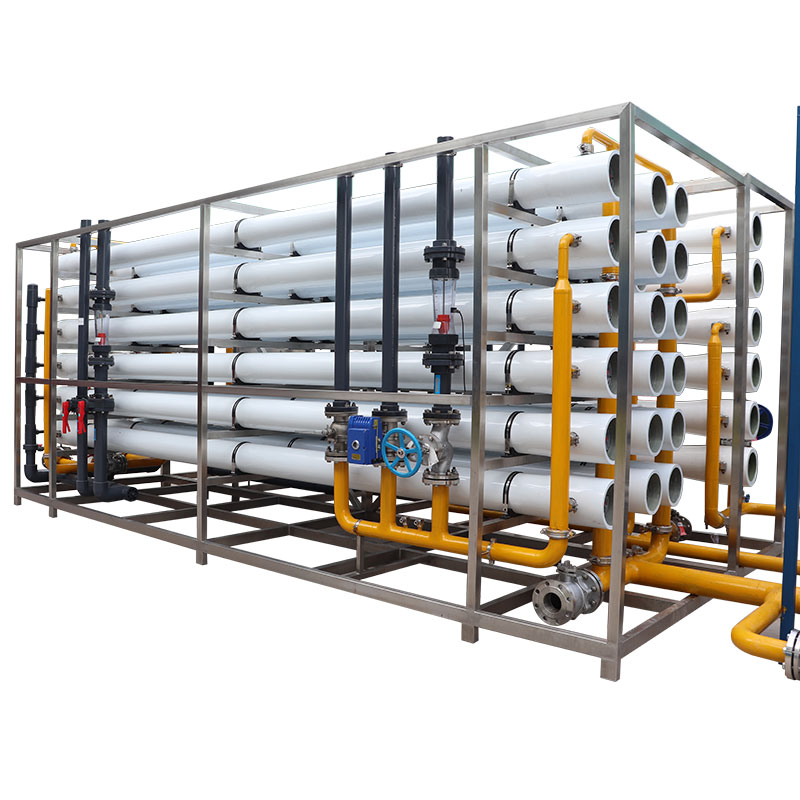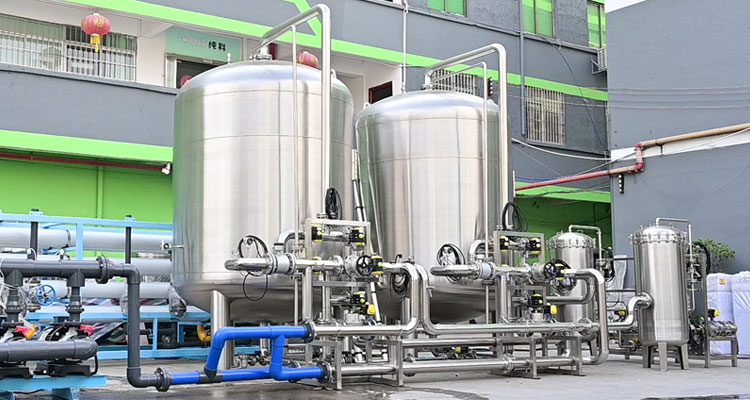Ters ozmoz sistemleri sondaj suyunu arıtabilir mi?
Borehole water, which is water obtained from deep underground through drilling, is widely used for agricultural irrigation, industrial water and domestic water. However, borehole water usually contains high concentrations of dissolved minerals, organic matter, bacteria and other pollutants, and treating these water sources has become an important task in many places.
As an efficient water treatment technology, whether the reverse osmosis system can effectively treat borehole water has become the focus of attention. This article will discuss in detail the application, effect, advantages and disadvantages of the reverse osmosis system in treating borehole water and its actual cases.

What are the main pollutants in borehole water?
Before analyzing the effect of reverse osmosis system in treating borehole water, it is necessary to understand the main pollutants in borehole water. The water quality of borehole water varies depending on the geographical location and geological conditions, but usually contains the following types of pollutants:
1. Dissolved minerals: such as calcium, magnesium, iron, manganese and other ions, resulting in high hardness of water.
2. Organic matter: including natural organic matter and pollutants brought by agricultural or industrial activities, such as pesticides, fertilizers and organic compounds in industrial wastewater.
3. Bacteria and viruses: pathogens that may exist in groundwater, affecting water quality safety.
4. Suspended matter and particulate matter: tiny particles from soil and rock formations.
5. Chemical pollutants: such as nitrates, chlorides and heavy metals.

How does the reverse osmosis system work?
The reverse osmosis (RO) system uses a semipermeable membrane to separate soluble substances and pollutants in water under high pressure. Water molecules can pass through the membrane pores, while most soluble substances and pollutants are retained on one side of the membrane, thereby purifying the water. The reverse osmosis system mainly includes the following key parts:
1. Pretreatment system: usually includes sand filters, activated carbon filters, etc., which are used to remove large particles and organic matter in the water and protect the reverse osmosis membrane from being blocked.
2. High-pressure pump: provides the pressure required for the reverse osmosis process and presses the water to the semipermeable membrane.
3. Reverse osmosis membrane: the core component, which separates water molecules and pollutants through the semipermeable membrane.
4. Post-treatment system: may include deionization devices, ultraviolet sterilizers, etc., to further purify the treated water.
Can reverse osmosis systems treat borehole water?
1. Removal of dissolved minerals:
Reverse osmosis systems perform well in removing dissolved minerals. After hard water caused by high concentrations of calcium and magnesium ions passes through the reverse osmosis membrane, the hardness is greatly reduced and the water quality is significantly improved. In addition, the reverse osmosis system can also effectively remove metal ions such as iron and manganese, avoiding the deposition and pollution caused by these elements in the water supply system.
2. Removal of organic and chemical pollutants:
Reverse osmosis membranes also have a high retention rate for organic and chemical pollutants. Organic compounds including pesticides, fertilizer residues and industrial pollutants have a significant decrease in concentration after reverse osmosis treatment. In addition, the reverse osmosis system is also very effective in removing chemical pollutants such as nitrates, chlorides and some heavy metals.
3. Removal of bacteria and viruses:
Since the pore size of the reverse osmosis membrane is very small (usually between 0.1-1 nanometers), it can effectively block the passage of pathogens such as bacteria and viruses. Therefore, the microbiological safety of borehole water treated with reverse osmosis has been greatly improved, reducing the risk of infectious diseases in drinking water.
4. Removal of suspended matter and particulate matter:
The pretreatment part of the reverse osmosis system, such as sand filters and activated carbon filters, can remove suspended matter and particulate matter in the water, ensure the normal operation of the reverse osmosis membrane, and avoid clogging and damage. These pretreatment steps are particularly important for borehole water treatment, because borehole water often contains a large number of tiny particles.

What are the advantages and disadvantages of the reverse osmosis system?
● Advantages of the reverse osmosis system:
1. Efficient purification: The reverse osmosis system can remove most contaminants in the water, including dissolved minerals, organic matter, bacteria and viruses.
2. Stable water quality: The water treated with reverse osmosis is very stable and suitable for a variety of uses, such as drinking, industrial water and agricultural irrigation.
3. Wide application: The reverse osmosis system is not only suitable for borehole water treatment, but also widely used in seawater desalination, wastewater treatment and other fields.
● Disadvantages of the reverse osmosis system:
1. High initial investment: The equipment cost of the reverse osmosis system is high, especially the price of high-pressure pumps and reverse osmosis membranes.
2. High operating cost: The reverse osmosis system requires a high-pressure pump to provide pressure, consumes a lot of energy, and has high maintenance and replacement costs for the membrane.
3. Wastewater generation: A certain amount of concentrated water will be produced during the reverse osmosis process, which needs to be properly treated to avoid environmental pollution.

Practical application cases
1. Case 1: A borehole water treatment project in a rural area
In a rural area, due to the lack of local surface water resources, residents mainly rely on borehole water for domestic use. The local government introduced a reverse osmosis system for water treatment. After pretreatment and reverse osmosis filtration, the water quality was significantly improved and met the drinking water standards. This project not only improved the quality of life of residents, but also reduced the incidence of water-related diseases.
2. Case 2: A borehole water purification project in an industrial park
In order to reduce dependence on municipal water supply, an industrial park chose to use borehole water as industrial water. By installing a reverse osmosis system, the borehole water is purified, the dissolved minerals and organic pollutants in the water are removed, the water quality is improved, and the water demand for industrial production and the normal operation of equipment are ensured.
Conclusion
In summary, the reverse osmosis system performs well in treating borehole water, effectively removing pollutants such as dissolved minerals, organic matter, bacteria and viruses in water, and significantly improving water quality. However, the high initial investment and operating costs of the reverse osmosis system, as well as the problem of wastewater treatment, also need to be fully considered.
For areas or enterprises that require high-quality water sources, the reverse osmosis system is undoubtedly an ideal choice, but a detailed cost-benefit analysis needs to be conducted before implementation to ensure its economy and sustainability.






